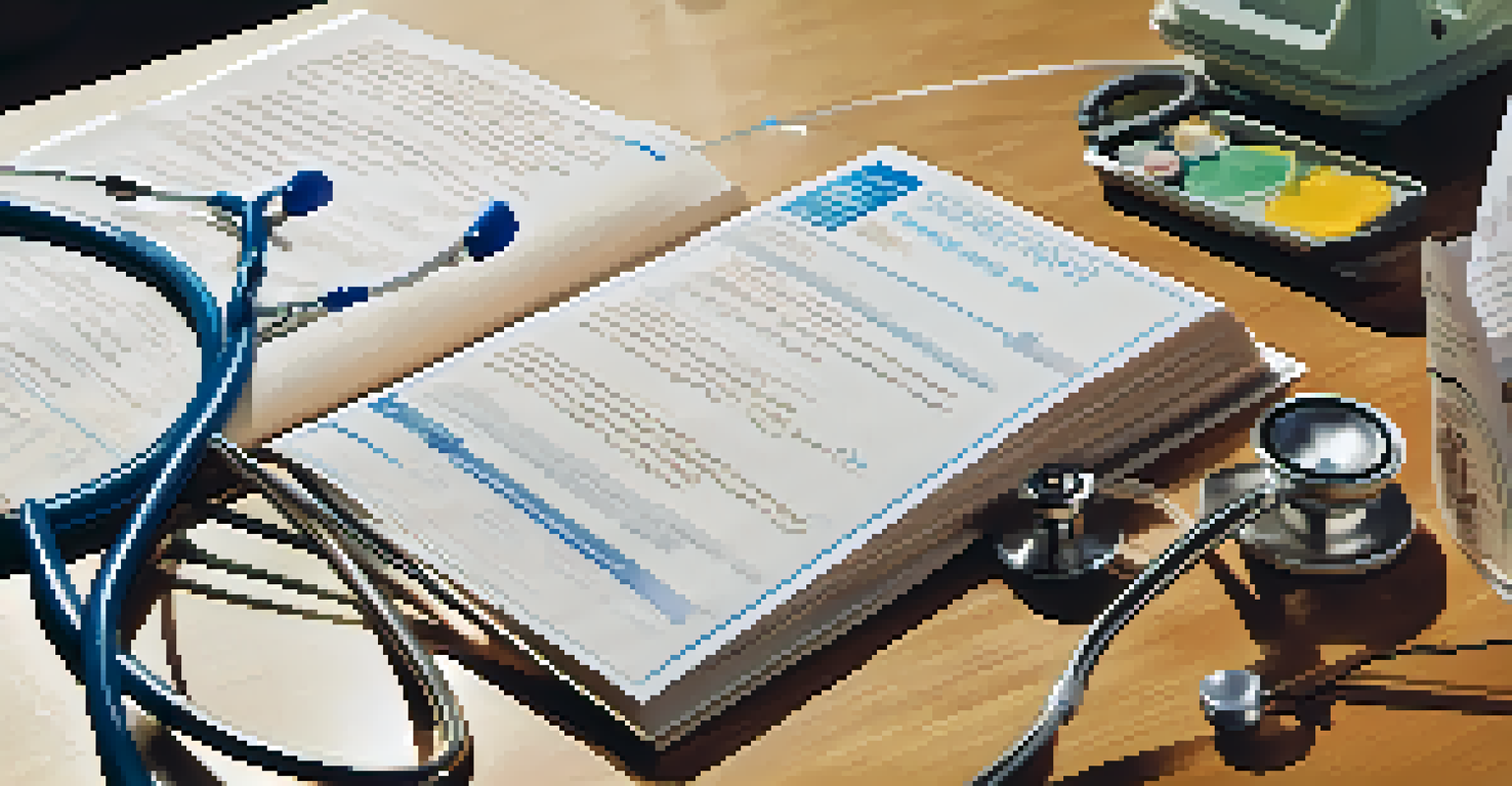Addressing Language Barriers in Healthcare

Understanding the Importance of Language in Healthcare
Language is a vital tool in healthcare, enabling clear communication between patients and providers. When language barriers exist, misunderstandings can lead to incorrect diagnoses or inadequate treatment. Ensuring that patients can communicate their symptoms and concerns clearly is crucial for effective healthcare delivery.
Language is the road map of a culture. It tells you where its people come from and where they are going.
Moreover, effective communication fosters trust between patients and healthcare professionals. Trust is essential for patients to feel comfortable sharing sensitive information that could impact their care. Thus, addressing language barriers not only improves health outcomes but also enhances the overall patient experience.
In a multicultural society, the need for multilingual services in healthcare settings has grown. This diversity requires healthcare providers to be aware of the linguistic needs of their patient population, ensuring that everyone receives the care they deserve, regardless of their primary language.
Identifying Common Language Barriers in Healthcare
Language barriers can manifest in various ways, from limited proficiency in the dominant language to complete lack of understanding. For instance, a patient who speaks only Spanish may struggle to communicate effectively with an English-speaking doctor. This disconnect can lead to frustration and confusion for both parties.

Cultural nuances also play a role in language barriers, as certain phrases or idioms may not translate well across cultures. Misinterpretations can arise, impacting the quality of care and patient satisfaction. Understanding these nuances is essential for healthcare providers to offer appropriate support.
Language is Key in Healthcare
Clear communication between patients and providers is essential for accurate diagnoses and effective treatment.
Additionally, the reliance on family members or untrained interpreters can complicate communication. While it may seem helpful to have a family member translate, they might not accurately convey medical terminology, leading to critical misunderstandings about treatment plans.
The Role of Professional Interpreters in Healthcare
Professional interpreters play a crucial role in bridging language gaps in healthcare settings. They are trained to accurately translate medical terminology and nuances, ensuring that both patients and providers understand each other. This expertise can significantly improve patient outcomes and satisfaction.
The single biggest problem in communication is the illusion that it has taken place.
Using professional interpreters also helps to maintain confidentiality and reduces the stress on family members who may not be equipped to handle complex medical discussions. With a professional in the room, patients can feel more secure in sharing their health concerns without fear of miscommunication.
Moreover, many healthcare institutions are now recognizing the importance of integrating interpreters into their patient care processes. This proactive approach not only fosters a more inclusive environment but also enhances the overall quality of care for diverse patient populations.
Utilizing Technology to Address Language Barriers
In today's digital age, technology offers several innovative solutions for addressing language barriers in healthcare. For example, telehealth platforms now often include built-in translation services, allowing patients to communicate effectively with their providers from anywhere. This can be especially beneficial for patients in remote areas.
Mobile apps dedicated to health translation can also assist patients in understanding medical instructions and terms in their preferred language. These tools not only empower patients but also streamline communication during appointments, reducing the chances of errors.
Professional Interpreters Matter
Trained interpreters ensure precise translation of medical terminology, enhancing patient outcomes and satisfaction.
However, while technology can be a valuable asset, it should complement—not replace—personal interaction. The human touch is irreplaceable, and ensuring a balance between technology and personal communication is vital for effective healthcare delivery.
Training Healthcare Providers on Cultural Competence
Cultural competence training is essential for healthcare providers to understand the diverse backgrounds of their patients. This training helps professionals recognize their own biases and assumptions, enabling them to approach patient care with empathy and understanding. A culturally competent provider is better equipped to navigate language barriers effectively.
By learning about various cultural perspectives on health and wellness, providers can tailor their communication strategies. This knowledge allows them to engage with patients in a respectful and relevant manner, making healthcare more accessible and effective for everyone.
Moreover, fostering cultural competence can lead to improved relationships between providers and patients. When patients feel understood and respected, they are more likely to engage actively in their healthcare, leading to better health outcomes.
Creating Multilingual Resources for Patients
Developing multilingual resources is another crucial step in addressing language barriers in healthcare. This includes translating pamphlets, consent forms, and educational materials into multiple languages. When patients have access to information in their preferred language, it empowers them to make informed decisions about their healthcare.
Moreover, ensuring that these resources are easily accessible can significantly improve patient engagement. For example, having bilingual staff members available to guide patients through complex processes can foster an inclusive environment that encourages participation.
Cultural Competence Training Needed
Healthcare providers must understand diverse backgrounds to effectively navigate language barriers and improve patient care.
It's also important to involve community members in the creation of these resources. By understanding the needs and preferences of diverse populations, healthcare organizations can design materials that resonate with patients and address their specific concerns.
Advocating for Systemic Change in Healthcare Policies
Advocating for systemic change is essential for effectively addressing language barriers in healthcare on a larger scale. Policies that mandate the availability of translation services and culturally competent care can help ensure that all patients receive equitable treatment. This advocacy can start at the local level and expand to influence national healthcare policies.
Engaging with community organizations and advocacy groups can amplify efforts to promote language access in healthcare. These partnerships can help raise awareness and drive change, creating a more inclusive system that acknowledges and addresses the needs of diverse populations.

Ultimately, systemic change requires collaboration among healthcare providers, policymakers, and communities. By working together, we can create a healthcare system that values and accommodates the linguistic diversity of its patients, leading to better health outcomes for everyone.